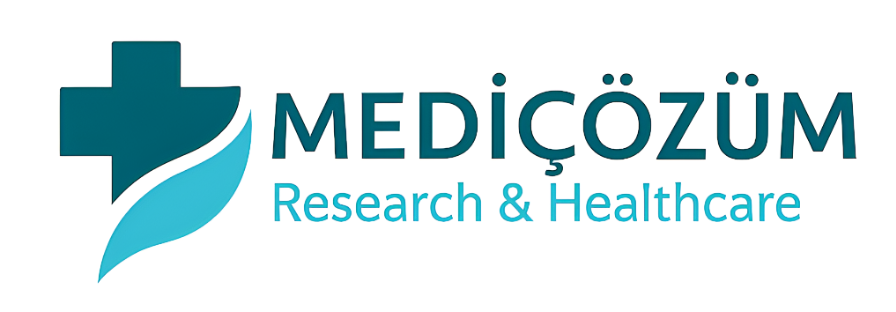Antimicrobial Effect of Non-Thermal Atmospheric Plasma on Streptococcus Mutans -The Key Cariogenic Microorganism in Plaque Biofilm
DOI:
https://doi.org/10.21276/r80ds442Keywords:
DentistryAbstract
Background: To evaluate the antimicrobial effect of non-thermal atmospheric plasma on mutans biofilms.
Materials: A 100 µl culture of Streptococcus mutans poured into two 120 well flat base microtiter plates, allowed to adhere and incubated overnight using brain heart infusion (BHI). These 120 wells were grouped into four groups, group A-helium treated, group B-plasma treated, group C- chlorohexidine treated and group D-control group (untreated group) with a group size of 30 wells per group. Triphenyl tetrazolium chloride (TTC) essay & Colony Forming Units (CFU) counting was done to check the viability & survival of streptococcus mutans biofilms.
Results: The results showed that there was a significant difference in the mean optical density (OD) among the four groups (p<0.001). Post-hoc analysis revealed that untreated samples and Helium had significantly higher mean OD than plasma and chlorhexidine groups. A similar result was also seen using the survival essay by CFU counting. Conclusion: Plasma utilizes the air from the atmosphere, thus rendering plasma a better reach in the oral cavity. This property of plasma can be efficiently used to neutralize Streptococcus mutans biofilms in the oral cavity.
Downloads
References
Aktan T, Oksuz L. Antimicrobial efficacy of nonthermal atmospheric pressure plasma against Candida albicans. Plasma Science (ICOPS) 2011.
Yingguang C, PingY,Xinpei L et al. Efficacy of Atmospheric Pressure Plasma as an Antibacterial Agent Against Enterococcus faecalis in Vitro. Plasma Science and Technology 2011; 13:93-98.
Wei C,Jun H,Ning D et al.Deactivation of Enterococcus faecalis Bacteria by an Atmospheric Cold Plasma Brush. Chinese Physics Letters 2012.
Nair RS, Babu B, Mushtaq E. Cold atmospheric plasma in dentistry.J Oper Det Endod 2016;1:82-86.
Sladek REJ, Stoffels E, Walraven R et al. Plasma treatment of dental cavities: a feasibility study. IEEE Trans. Plasma Sci 2004; 32: 1540–1543.
Ahn SJ, Wen ZT.Characteristics of Biofilm Formation by Streptococcus mutans in the Presence of SalivaInfect Immun 2008;76:4259–4268.
Gabrielson J, Hart. Evaluation of redox indicators and the use of digital scanners and spectrophotometer for quantification of microbial growth in microplates. J Microbiol Methods 2002; 50: 63-73.
Roehm NW, Rodgers GH. An improved colorimetric assay for cell proliferation and viability utilising the tetrazolium salt XTT. J Immunol Methods 1991; 142: 257-265.
Nwanyanwu CE,AbuGO. Assesment of viability responses of refinery effluent bacteria after exposure to phenol stress. Journal of Research in Biology 2011;8: 594-602.
Gabrielson J, Hart M. Evaluation of redox indicators and the use of digital scanners and spectrophotometer for quantification of microbial growth in microplates. J Microbiol Methods 2002;50:63-73.
Pettit R.K, Webe CA, Kean M.J et al. Microplate alamar blue assay for Staphylococcus epidermidis biofilm susceptibility testing. Antimicrob Agents Chemother 2005;49: 2612-2617.
HoraK, GreifovaMA comparison of the traditional method of counting viable cells and a quick microplate method for monitoring the growth characteristics of Listeria monocytogenes. Letters in Applied Microbiology 204;38:181–184.
BeightonD. The complex oral microflora of high-risk individuals and groups and its role in the caries process. Community Dentistry and Oral Epidemiology 2005;33:248–255.
Donnel MG, Russell AD.Antiseptics and disinfectants: activity, action and resistance. Clinical Microbiology Reviews 1999;12:147–179.
Scheie A, Fejerskov AO. The role of antimicrobials. In Dental Caries, the Disease and its Clinical Management 2003;179-188.pages 179–188. Blackwell Munksgaard, 2003.
Soet JJ, Gruythuysen.The effect of 6–monthly application of 40 % chlorhexidine varnish on the microflora and dental caries incidence in a population of children in surinam. Caries Research 2002;36:449–455.
FridmanG, Brooks AD,Balasubramanian M et al. Comparison of Direct and Indirect Effects of Non-Thermal Atmospheric-Pressure Plasma on Bacteria.Plasma Processes and Polymers 2007;4:370-375.
Gore JM, BinL. IEEE Transactions On Plasma Science 2006; 34.
KieftI E.Plasma needle: exploring biomedical applications of non–thermal plasmas. Thesis/ dissertation, Eindhoven University of Technology 2005.
ZachL, CohenG.Pulp response to externally applied heat. Oral Surgery, Oral Medicine, Oral Pathology 1965; 19:515–530.
Sladek REJ, Filoche SK. Plasma needle treatmen ofStreptococcus mutans biofilms. Submitted to Letters in AppliedMicrobiology, 2006.
Rupf S, Lehmann. A et al. Plasma needle treatment of Streptococcus mutansbiofilms. Journal of Medical Microbiology 2010;59:206-212.

Downloads
Published
Issue
Section
License
Copyright (c) 2024 International Archives of BioMedical and Clinical Research

This work is licensed under a Creative Commons Attribution-NonCommercial 4.0 International License.
Authors are required to sign and submit the completed “Copyright transfer Form” upon acceptance of publication of the paper. This is determined by a publishing agreement between the author and International Archives of Biomedical and Clinical Research. These rights might include the right to publish, communicate and distribute online. Author(s) retain the copyright of their work. International Archives of Biomedical and Clinical Research supports the need for authors to share, disseminate and maximize the impact of their research.












